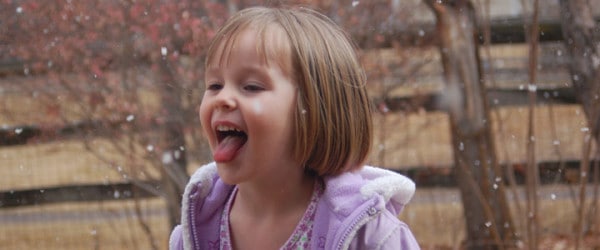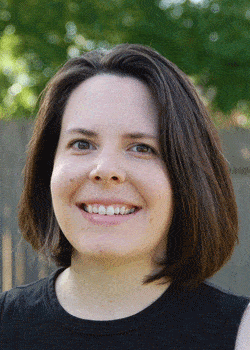MOTHERING YOUR SELF
By
Jessica Sorci, MA, MFTI
In those first days, weeks and months after having a baby, every new
mother undergoes immense physical, emotional and psychological change.
The change is all-encompassing and completely overwhelming at times,
even to the most well-adjusted, best supported mom. Just as her
pregnancy gradually, but utterly transformed her body and her ideas
about herself, her postpartum experience is also utterly
transformational, but this time in an immediate, full-speed-ahead way
that isn’t the least bit gradual and is entirely unrelenting. As a
therapist who works with new moms, and as a former new mom myself, I
have seen and known the intensity of this kind of life transformation up
close, over and over again. Sometimes the intensity of the
transformation creates or stirs up anxiety, despair and depression.
Some new moms get entirely swallowed up in the fear and despair and some
just visit those feelings on occasion. I believe there are some
specific ways we can help protect ourselves from getting completely
swallowed up and ways we can help ourselves recover when we begin to
sense the overwhelm encroaching. Let's explore...
If I were to name the single most powerful contributor to anxiety and
despair in the postpartum period it would be LACK OF SLEEP. Creating
opportunities for uninterrupted sleep is critical to maternal wellness.
If you are able to arrange even one or two nights a week of really good
sleep you will find your mood improves dramatically, just knowing you
can expect and count on getting these little (but HUGELY important)
breaks for true sleep. If you are particularly sleep-challenged, here
are some ways you might consider reconstructing your life so that you
can get the sleep that is required to feel and to function reasonably
well:
* Ask family members (moms, sisters, nieces, aunts, grandmothers) if
they can come spend the night and take over the nighttime duties
(feeding, holding and changing your little one) so that you can close
your bedroom door and sleep uninterrupted.
* Hire a night nanny or a postpartum doula if you can afford to.
Even if it's just one or two nights a week, you will benefit immensely
from being able to put in ear plugs, get truly comfortable and SLEEP for
at least 4 continuous hours. Hopefully twice, consecutively in one
night.
* Have your partner take over night duties on his nights off. I know
it's not how your partner dreams of spending his days away from work
but remember, your partner is not also recovering from giving birth,
making milk (if you're breastfeeding) and is not linked up and hooked in
to the baby to the same degree that you are...meaning, your partner's
body has a lot more time and resources available for restorative
activity than does yours. Your partner has a huge advantage here in
terms of energy. He can sacrifice those Friday and Saturday nights for
the greatest good of the whole family, allowing you to get some quality
sleep while he tends to the baby and sleeps in a separate room from you.
Without some decent sleep we cannot be well. Without our wellness
our families suffer. Truly, make this the top priority for yourself
every day. At some point your baby will be sleeping longer stretches at
night and not requiring the level of care he/she needs now (I
promise!). But in those times when baby isn’t sleeping, make certain
you have a plan in place to protect your own sleep. I can’t overstate
the importance of this one.
Many new moms also suffer from the near complete loss of free time
and the grief and guilt that seem to accompany that loss. We yearn for
the ability to take a long, hot shower, watch a movie, think the
thoughts we want to think, linger over a meal…and there is absolutely
nothing wrong with wanting and missing all of those ways we used to
live. I would go so far as to say, it’s incredibly healthy to yearn for
all those ways we used to live, for those are the ways we knew how to
take care of ourselves and the ways we knew how to feel joy and comfort
and wellness. The fact that you miss your old life is really a good
sign – that there is a life in you that wants to re-engage and
re-emerge. However, many new moms have a tendency to feel this desire
and this yearning is in conflict with being a “good mom”. A “good mom”
would be content just being a mom – just holding, feeding, changing,
bouncing and tending to her little one 24/7. Right? Ahem. Very few
humans would find complete fulfillment in such a rigorous, repetitive,
and in some way (dare I say) unrewarding job. Loving your baby and
being a wonderful, responsive, attuned mother is not at all in conflict
with having a need for a self. The challenge and the conflict are
really around managing to have both. And if I’m telling the real truth
here, in the early days and weeks and months, baby’s needs win out most
of the time. Often there just aren’t enough hours in the day or helping
hands and frankly there isn’t sufficient ENERGY to allocate a
reasonable chunk to mom’s very real, very valid needs. But with a
little effort we can usually arrange for some small chunks of time on a
regular basis in which to care for ourselves. Those small chunks of
time are priceless and are, like sleep, critical to maternal wellness.
I’ve given some thought to creating a list of ways to replenish
sanity/energy/wellness if you have only a small chunk of time. I
suggest you add to this list and then use it at least twice a week –
once a day preferably. And even if you only have a few minutes, invite
yourself to really become present, to really inhabit your body in the
moment. Become aware of your breath and of the sensations in your
chest, your face, your arms, neck and back. Here we go:
If you have 15 minutes to Mother Your Self:
* Take a shower and use a candle or cleanser that feels or smells wonderful.
* Call a good friend/family member to connect – someone you can REALLY talk to.
* Make a delicious snack.
* Read a magazine or go online for fun
* Lay down and rest.
If you have 30 minutes to Mother Your Self:
* Take a relaxing bath. Close your eyes and allow yourself to feel the warmth and the weightlessness of the water.
* Sit down and eat a nutritious meal. Chew slowly and savor the taste and the sensation of being fed.
* Take a walk in your neighborhood. Turn your attention to the way
your body feels. Notice what it's like to move without holding a baby.
* Go to a nearby coffeehouse and enjoy the feeling of being in the world, and being free to linger a bit.
* Take a short (but hopefully sweet) nap.
If you have 1 or 2 hours to Mother Your Self:
* Arrange for a gentle, loving postnatal massage. Treat yourself.
* Go to your favorite restaurant and eat something you are truly hungry for.
* Go to a movie and let your mind travel somewhere entirely different
from your current life. Do some advance research to ensure that the
movie is uplifting and not scary or depressing.
* Chamomile tea, earplugs, pillows, close the door and SLEEP.
* Find an entertaining, enjoyable book and lose yourself in a wonderful story.
* See a therapist to talk and feel supported in this particularly challenging time.
* Go someplace in nature that you find beautiful - the ocean,
mountains, a lake, a park and soak it in. Walk, meditate, breathe and
immerse yourself in the beauty and wonder of the natural world.
* Go to a cafe and bring a notebook. Begin writing about your birth
story, your current experience as a new mom, or something entirely
different. Take this time to explore the contents of your own mind -
often our thoughts and impressions receive very little floor time and
yet there is so, so much to process and metabolize.
* Go to a yoga or meditation class. Take some time to get in your
body and give it some love. Doing so in the presence of others can feel
like an entrance back into the world.
Add to this list and keep it nearby so that you can use the bits of “free” time you have to nourish yourself.
There is nothing on earth as important as creating and raising a
child. Nothing. Mothering means infusing a new little body and
consciousness with love, making manifest through your presence and your
responsiveness an experience of the world as a safe, welcoming place.
Imagine for a moment exactly what it takes to imbed a human being with a
real conviction that they are loved and with the desire and confidence
to launch into life full of curiosity. Oh, and also, to equip that
person with the ability to tolerate struggle, pain, failure and loss
(because sadly, those things will surely come at some point). Yes, this
motherhood thing is quite an endeavor. Many of us are faced with the
crushing realization that we have had very unrealistic expectations of
perfectionism for ourselves as the mothers we envisioned ourselves being
(prior to motherhood). We thought we could do it all and do it all
perfectly (or at least REALLY, REALLY well). When we become parents we
are forced to realize that we cannot possibly do it as well, as
flawlessly as we had fantasized because it is in fact a 24 hour a day
job that sustains for somewhere in the neighborhood of 18 years and
challenges pretty much every facet of our entire being. Thankfully, we
also learn that perfection is neither required, nor is it even
desirable. "The good-enough mother...starts off with an almost complete
adaptation to her infant's needs, and as time proceeds she adapts less
and less completely, gradually, according to the infant's growing
ability to deal with her failure..." (Donald Winnicott ,Transitional
Objects and Transitional Phenomena, 1951). Part of
learning to be a good enough mother is learning how to care for the baby
and the little girl in our selves even as we care for our children. It
turns out that the better we care for the baby inside of us, the better
we are able to mother the baby in our arms.
This blog is written with the intention of addressing that little
person inside of you who has perhaps been neglected since the birth of
your baby, or maybe even longer than that. Some of us have never
received the kind of mothering that we now expect to be able to give to
our children. How can we give what we have never received? Ahhh. Now
that we know exactly what it is we want and need to be able to GIVE, we
know exactly what it is we need to receive. That’s right. You need to
find a way to give yourself at least a sliver of what you are now oozing
from every orifice. Love. Food. Rest. Attention. I’m talking about
Mothering Your Self.



 Bio: Amy Webb is stay-at-home mom to a 2 year old son and author of the blog
Bio: Amy Webb is stay-at-home mom to a 2 year old son and author of the blog 



